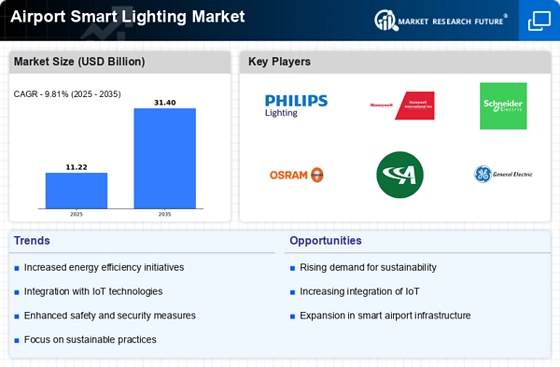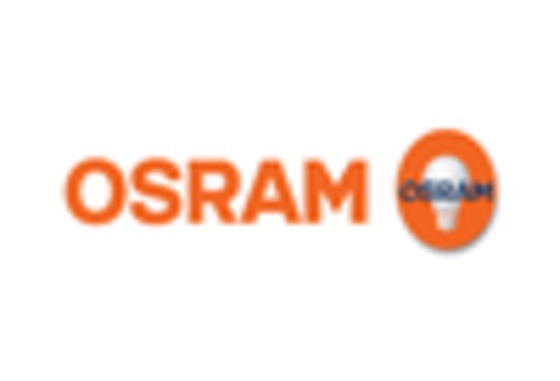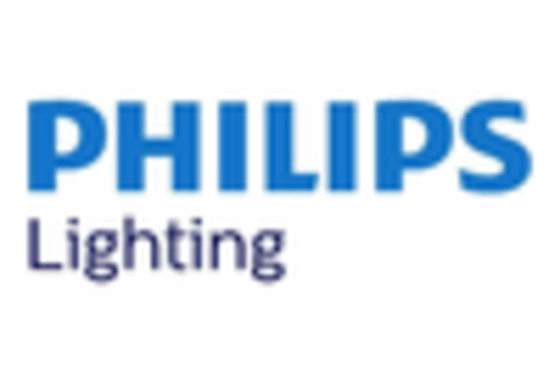Regulatory Compliance and Safety Standards
Regulatory compliance plays a crucial role in shaping the Airport Smart Lighting Market. Governments and aviation authorities are increasingly mandating stringent safety standards for airport operations, including lighting systems. Compliance with these regulations often necessitates the adoption of advanced lighting technologies that meet safety and efficiency criteria. For example, the International Civil Aviation Organization (ICAO) has established guidelines that influence lighting design and implementation. As airports strive to meet these regulations, the demand for smart lighting solutions is expected to rise, thereby driving growth in the Airport Smart Lighting Market.
Focus on Energy Efficiency and Cost Reduction
The emphasis on energy efficiency is a prominent driver in the Airport Smart Lighting Market. Airports are under pressure to reduce operational costs while maintaining high safety and service standards. Smart lighting systems, which utilize energy-efficient technologies such as LED and intelligent control systems, can significantly lower energy consumption. Reports indicate that airports implementing these systems can achieve a reduction in lighting costs by approximately 30-50%. This focus on cost reduction and sustainability is likely to propel the adoption of smart lighting solutions, further stimulating growth in the Airport Smart Lighting Market.
Increased Investment in Airport Infrastructure
Investment in airport infrastructure is a vital driver for the Airport Smart Lighting Market. As air travel continues to expand, many airports are undergoing modernization and expansion projects. These initiatives often include the upgrade of lighting systems to enhance operational efficiency and passenger experience. Recent data suggests that investments in airport infrastructure are projected to reach billions in the coming years, with a significant portion allocated to smart technologies. This influx of capital is likely to accelerate the adoption of smart lighting solutions, thereby fostering growth in the Airport Smart Lighting Market.
Growing Demand for Enhanced Passenger Experience
The demand for an enhanced passenger experience is increasingly influencing the Airport Smart Lighting Market. Airports are recognizing the importance of creating a welcoming and efficient environment for travelers. Smart lighting solutions can contribute to this goal by providing better visibility, improving aesthetics, and creating a more comfortable atmosphere. Additionally, the integration of dynamic lighting can guide passengers through terminals, enhancing navigation and overall satisfaction. As airports prioritize passenger experience, the adoption of smart lighting technologies is expected to rise, driving growth in the Airport Smart Lighting Market.
Technological Advancements in Lighting Solutions
The Airport Smart Lighting Market is experiencing a surge in technological advancements, particularly in LED and smart lighting solutions. These innovations not only enhance energy efficiency but also improve operational effectiveness. For instance, the integration of sensors and automation allows for adaptive lighting that responds to real-time conditions, thereby optimizing energy consumption. According to recent data, airports adopting smart lighting systems have reported energy savings of up to 60%. This trend is likely to continue as airports seek to modernize their infrastructure and reduce operational costs, making technological advancements a key driver in the Airport Smart Lighting Market.


















Leave a Comment